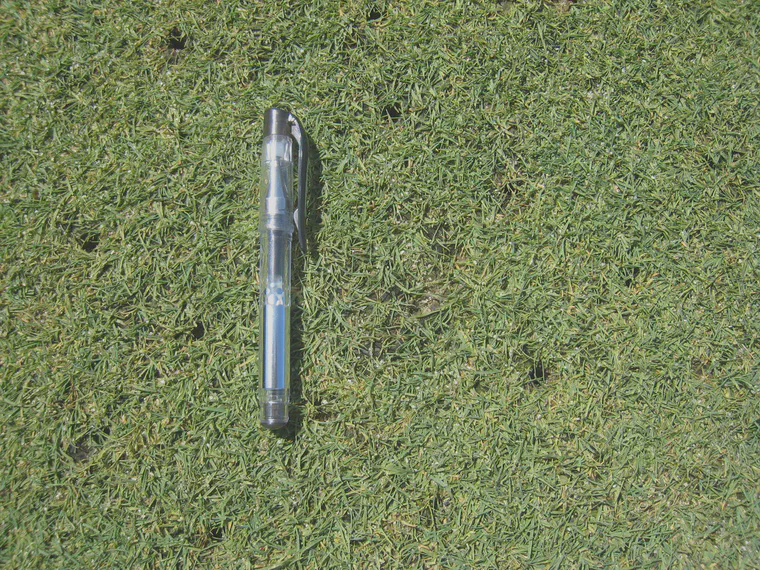What if it was never there?
I’ve been thinking about this one a lot. It seems obvious that a sward supplied with more nitrogen fertilizer will tend to produce more organic material in the soil. It also seems obvious that a sward on which hollow-tine cultivation, or scarification, or sand topdressing, have been conducted, will need to receive more nitrogen in order to produce a surface compared with an adjacent sward that didn’t receive any of that work.

I had an email conversation about this recently. What I concluded was that organic matter that one expects to find in the soil won’t be there if the grass never grows enough to produce it. Here’s the conversation.
A correspondent wrote,
All those guys that used to topdress heavy throughout the season but now has gone the other way (like Hazeltine and Keya), why don’t they build up organic matter now when they hardly topdress, or hollow core, anymore? Why doesn’t their OM numbers in top 2 cm change more than they do?
I find it highly interesting but I just cant figure out where the organic matter goes?
My best answer would be that they can slightly reduce their input as of nitrogen and irrigation, but is that really enough?
I replied with this,
For your questions, about how is this possible, and where does the OM go? I don’t know the answer. I will speculate here in the email. What I think happens is that the less sand one puts on the surface, the slower a growth rate can be maintained to produce a good surface. I don’t think we notice this much when we manage the turf, because it seems so natural to spread sand and to maintain a growth rate that is rapid enough for the grass to grow through that sand. There must be some organic matter accumulating in the soil at that growth rate.
As the quantity of sand spread over the surface is reduced, and also as the quantity of coring (hollow-tine aeration) holes are reduced or eliminated, the growth rate can be reduced. I don’t think we notice this on a day to day basis. It’s a small difference when considered as a daily difference in growth rate and organic matter production. But that difference, if added up day after day over the entire year, I think that annual total might be a big difference. And the answer becomes, the organic matter never went anywhere. It was never there, it was never created. But in the case of sand topdressing and core aeration, the organic matter does get created because the greenkeeper has to put fertilizer to stimulate growth to get the grass leaves above the sand, and to get grass to grow over the coring holes.
We probably tend to think of sand and coring as organic matter management, and organic matter dilution, and organic matter removal. Those are the words I have used hundreds or thousands of times. That’s how I have thought of it. That’s how the books and seminars describe this. But my current idea is that this might be misleading. What if the most important thing is the accumulation rate? And what if OM accumulation rate happens to be relatively low when you put a little bit of sand, no coring, and reasonable nitrogen and water supply. Then, what if the accumulation rate just happens to be a little bit higher (and it almost certainly must be, to recover from the disruptive maintenance work) when topdressing and coring are done?
That’s my intuition about this.